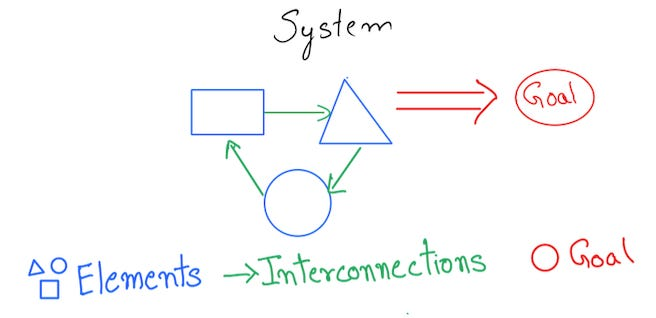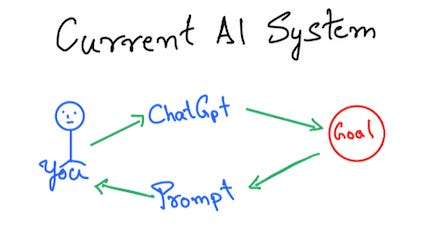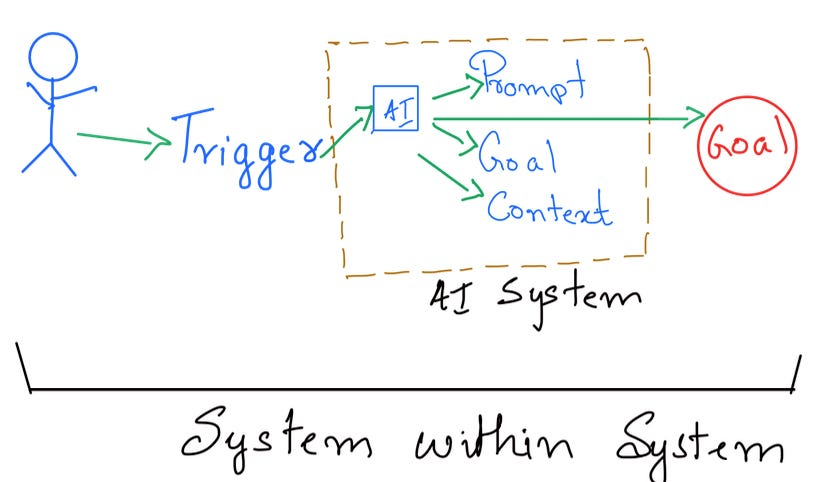Using ChatGPT in Your Business Is Not Enough
You're not bad at AI. You're missing a system.

Photo by LJ Checo
It’s happening again.
You open ChatGPT with high hopes.
You’ve seen the demos, read the success stories, watched people claim they’re “10x-ing their productivity” with AI.
You craft your prompt carefully, hit enter, and wait.
The response comes back.
It’s… okay. Generic.
Nothing like what you were hoping for. You try tweaking the prompt, adding more details, being more specific. Still mediocre.
So you close the tab and do it yourself. Again.
But here’s what really stings: Next week, you try the exact same thing. Same prompt, same approach, different (and equally disappointing) result.
You start wondering if you’re missing something. Maybe you need better prompting techniques? Maybe those $97 prompt template packages everyone’s selling actually work? Maybe you’re just not “good at AI”?
I’ve been there. That feeling of being left behind while everyone else seems to be riding the AI wave successfully. That nagging thought that you should be getting more from these powerful tools.
But after months of experimenting and observing patterns in how businesses actually succeed with AI, I discovered something that changed everything.
The problem isn’t your prompts. It’s not your technique. It’s your system.
Or rather, it’s the lack of one.
Let me explain what’s actually happening when you sit down with ChatGPT.
The Hidden Problem in Your AI Workflow
Right now, your AI process probably looks like this:
You (with all your knowledge, context, and goals) → Prompt → ChatGPT → Output.
Seems logical, right? But here’s the issue.
YOU are the central element holding everything together.
Think about it. When you use ChatGPT, you’re carrying:
→ The context of what you’re trying to achieve
→ Your brand voice and style preferences
→ The specific outcome you need
→ Past examples of what worked
→ Today’s specific requirements
All of this lives in your head. And your head, like mine, isn’t always operating at peak performance.
Monday morning?
Your prompts might be scattered.
Friday afternoon?
You might forget the key context.
Busy day?
You rush and miss important details.
Two weeks later?
You can’t remember exactly what worked before.
You’ve become the weakest link in your own AI workflow.
This is why results are inconsistent.
This is why you spend the same amount of time wrestling with AI each time. This is why it feels like you’re not making progress.
The worst part?
Every time you start over, you’re essentially rebuilding the wheel. All that learning, all those iterations, all that context is gone.
You’re back to square one, hoping this time will be different.
The Systems Thinking Shift
A system is an interconnected set of elements that is coherently organised in a way that achieves something. - Donella H. Meadows

Any system that you will have will consist of three kinds of things:
→ Elements (the parts)
→ Interconnections (how they relate)
→ A function or purpose (what they achieve together)
For example, the elements of your digestive system include teeth, enzymes, stomach and intestines. They are interrelated through the physical flow of food and through an elegant set of regulating chemical signals.
The function of this system is to break down food into its basic nutrients and to transfer those nutrients into the bloodstream (another system) while discarding unusable wastes.
- Thinking in Systems by Donella H. Meadows
Your Current “System” (And Why It Fails)
Your current AI approach has elements: You, your prompt, and ChatGPT.

But notice who’s driving this system? You. Every connection runs through you. You’re not just using the system – you ARE the system. And that’s exactly why it’s failing.
When you are the system, every variable in your day affects the output:
→ Your energy levels
→ Your memory of what worked before
→ Your ability to articulate what you need
→ Your patience to iterate and refine
→ Your consistency in approach
It’s exhausting. And it’s why you get those wildly different results even when you think you’re doing the same thing.
Building Your First AI System
What if, instead of being the system, you could build a system that works without you at the centre?
Here’s what that looks like:
Traditional approach: You → Prompt → ChatGPT → Output
Systems approach: Trigger → [Context + Goal + Process] → Consistent Output

The difference is profound. In the systems approach, you’ve created something that exists independently of your daily variables. You’re not the system anymore – you’re the architect who built it.
Let me break down what this actually means:
Context: This is your accumulated knowledge, embedded into the system once. Your brand voice, your examples of past successes, and your specific requirements would be great. Instead of carrying this in your head, it lives in the system.
Goal: A clearly defined outcome that doesn’t change based on your mood. The system knows exactly what success looks like because you’ve defined it clearly, once.
Process: The series of steps the AI follows every time. Not different prompts each day, but a consistent process that refines and improves with each use.
Feedback Loop: The system learns from each run, getting better without you having to remember what worked.
The magic happens when these elements work together without you needing to be the connecting tissue. You’ve moved from being IN the system to working ON the system.
What This Looks Like in Practice
Imagine you need to write weekly email newsletters (like this one).
In the old way, every week you’d sit down, try to remember what worked, craft new prompts, iterate until something decent emerged, then start fresh next week.
Disclaimer: I still follow the old process as I enjoy the art of crafting. But that’s just me.
In the systems way, you build it once:
→ Context: Your voice, your best examples, your audience’s needs
→ Goal: Engaging newsletter that drives specific action
→ Process: Extract key insight → Create compelling hook → Build narrative → Add personal elements → Include clear CTA
→ Feedback: Save what resonates, adjust what doesn’t
Now, each week you trigger the system. It knows your voice. It knows your goals. It follows the process. It gets better each time.
The time investment? Same effort you’d put into one good session, but now it’s captured forever. Next week takes minutes, not hours. And the week after that. And the week after that.
The Compound Effect You’re Missing
Here’s what most people don’t realise:
When you don’t have systems, you’re not just wasting time; you’re missing compound improvements.
Every time you start fresh with ChatGPT, you lose:
→ The refinements from last time
→ The specific adjustments that worked
→ The context you built up
→ The patterns you discovered
You might argue that not all is lost. And ChatGPT or any other LLM might still remember some of your changes.
But with a system, every run makes the next one better. Your context gets richer. Your process gets refined. Your outputs get more consistent and higher quality.
It’s the difference between walking in circles and climbing stairs. One leaves you exhausted in the same place. The other takes you higher with each step.
Your Next Step
You have two choices right now.
You can keep wrestling with AI tools, hoping that the following prompt template or technique will finally give you consistent results. You can keep being the system, with all the frustration and inconsistency that brings.
Or you can build your first AI system. One that works without you at the centre. One that delivers consistent results. One that actually saves time instead of just shifting it around.
I’m opening up time next week to help a small group of business owners map out their first AI system.
This isn’t about generic templates or one-size-fits-all solutions. We’ll identify exactly where AI can multiply your efforts in YOUR specific business. We’ll design a system that matches YOUR voice, YOUR goals, YOUR needs.
You’ll walk away with:
→ A clear blueprint for your first AI system
→ The exact elements and connections you need
→ An implementation plan you can execute immediately
→ The confidence that comes from knowing exactly what to build
→ Book your AI Systems Strategy Call here
Fair warning: This isn’t for everyone. If you’re looking for magic bullets or copy-paste solutions, this isn’t it. But if you’re ready to think systematically about AI and build something that actually works, let’s talk.
Because here’s the truth I’ve learned: The businesses winning with AI aren’t the ones with the best prompts. They’re the ones with the best systems.
Stop being the system. Start building systems.
P.S. Still on the fence? Ask yourself:
How many more weeks do you want to spend getting inconsistent results from AI? The time you invest in building a system this week pays dividends every week after. The best time to build your first system was six months ago. The second-best time is now.